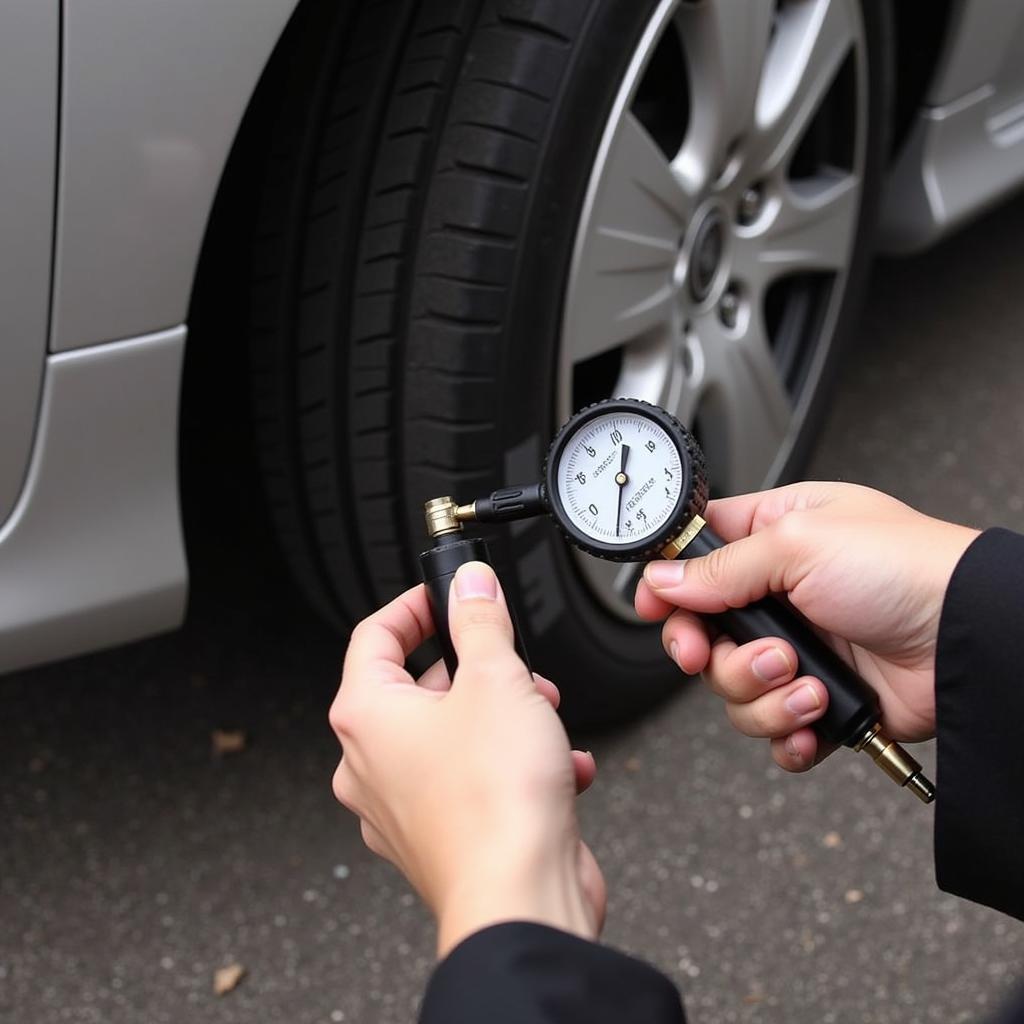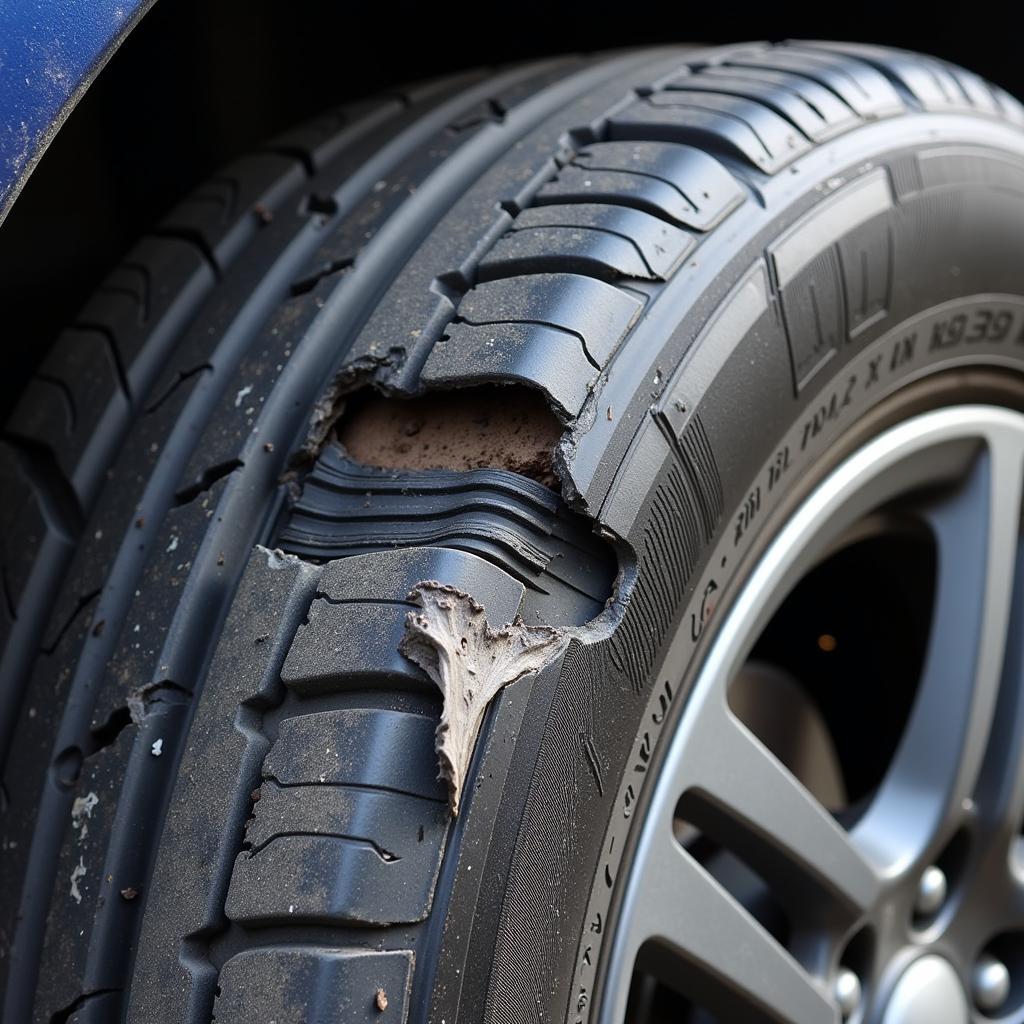A slow leak in your car tire can be a real headache, leaving you stranded or constantly worried about tire pressure. Knowing How To Fix A Slow Leak In Car Tire is essential for any driver. This guide will provide a comprehensive overview of how to identify, locate, and repair a slow leak, empowering you to handle this common car issue with confidence.
Identifying a Slow Leak
Before you start fixing a slow leak, you need to be sure that’s the problem. Is your tire consistently losing pressure over a period of several days or weeks? This is the hallmark of a slow leak. Unlike a puncture, which results in rapid air loss, a slow leak is more subtle. You might notice your tire pressure light illuminating or find yourself needing to add air more frequently.
Locating the Leak
Finding the exact source of a slow leak can be tricky. Here are several methods:
- The Soapy Water Test: Mix a solution of soapy water and spray it liberally over the entire tire surface, including the valve stem. Look for small bubbles forming. These bubbles indicate escaping air and pinpoint the location of your leak.
- Submerging the Tire: If the soapy water test is inconclusive, try submerging the inflated tire in water. This method is often more effective for detecting tiny leaks. Watch for streams of bubbles rising from the tire.
- Checking the Valve Stem: Sometimes, the leak isn’t in the tire itself but in the valve stem. Listen for a hissing sound around the valve stem or apply soapy water directly to it.
 Checking tire pressure with a gauge
Checking tire pressure with a gauge
Fixing the Leak: DIY vs. Professional
Once you’ve located the leak, you have a few options for repair, depending on the severity and your comfort level with DIY fixes.
DIY Repair Options
- Tire Sealant: For small punctures and slow leaks, a tire sealant can be a quick and temporary fix. These sealants are injected through the valve stem and coat the inside of the tire, plugging the leak. Remember, this is generally a temporary solution until you can get the tire properly repaired or replaced.
- Tire Plug Kit: For punctures, a tire plug kit can be a more permanent DIY solution. These kits involve inserting a rubber plug into the hole to seal the leak. However, it’s important to note that using a plug without patching the tire internally is not recommended for long-term use.
Professional Repair
- Patching: A tire patch is applied to the inside of the tire to cover the damaged area. This is a more permanent solution and is often performed by a tire professional.
- Tire Replacement: If the damage is extensive or the tire is old and worn, replacement might be the safest option.
 Applying tire sealant to a car tire
Applying tire sealant to a car tire
Preventing Slow Leaks
While not all slow leaks are preventable, there are steps you can take to minimize the risk:
- Regular Tire Pressure Checks: Maintaining the correct tire pressure can prevent damage from underinflation and help you identify a slow leak early on.
- Tire Rotation and Balancing: Regular rotation and balancing help ensure even wear and tear on your tires, reducing the likelihood of developing weak spots that could lead to leaks.
- Avoiding Road Hazards: Be mindful of potholes, debris, and other road hazards that can damage your tires.
 Tire professional patching a tire
Tire professional patching a tire
When to Seek Professional Help
While some slow leaks can be addressed with DIY solutions, it’s essential to know when to seek professional help. If the leak is significant, the tire is damaged beyond repair, or you’re unsure how to proceed, consult a qualified tire technician. They have the expertise and equipment to diagnose and fix the problem safely and effectively.
Conclusion
Addressing a slow leak in your car tire promptly is crucial for your safety and the longevity of your tires. By understanding how to identify, locate, and fix a slow leak, you can take control of the situation and avoid further complications. Don’t hesitate to contact AutoTipPro at +1 (641) 206-8880 or visit our office at 500 N St Mary’s St, San Antonio, TX 78205, United States, for expert assistance with your tire repair needs.
 Damaged tire requiring replacement
Damaged tire requiring replacement
For more specific information on how to fix a slow leak in car tire in your area, you might find resources on how to fix a slow leak in my car tire. If you are looking for a more general guide to address this problem, check out this article on how to fix a slow leaking car tire. This information is valuable for both car owners and professionals. Similar to fix a slow leak in car tire daly city, addressing this issue quickly can save you time and money. You can find another useful guide on fix slow leak car tire. For those curious about various methods to repair a slow leak, you can also refer to how to fix a slow tire leak car. This resource can help you understand the different options available and choose the best approach for your situation.




Leave a Reply